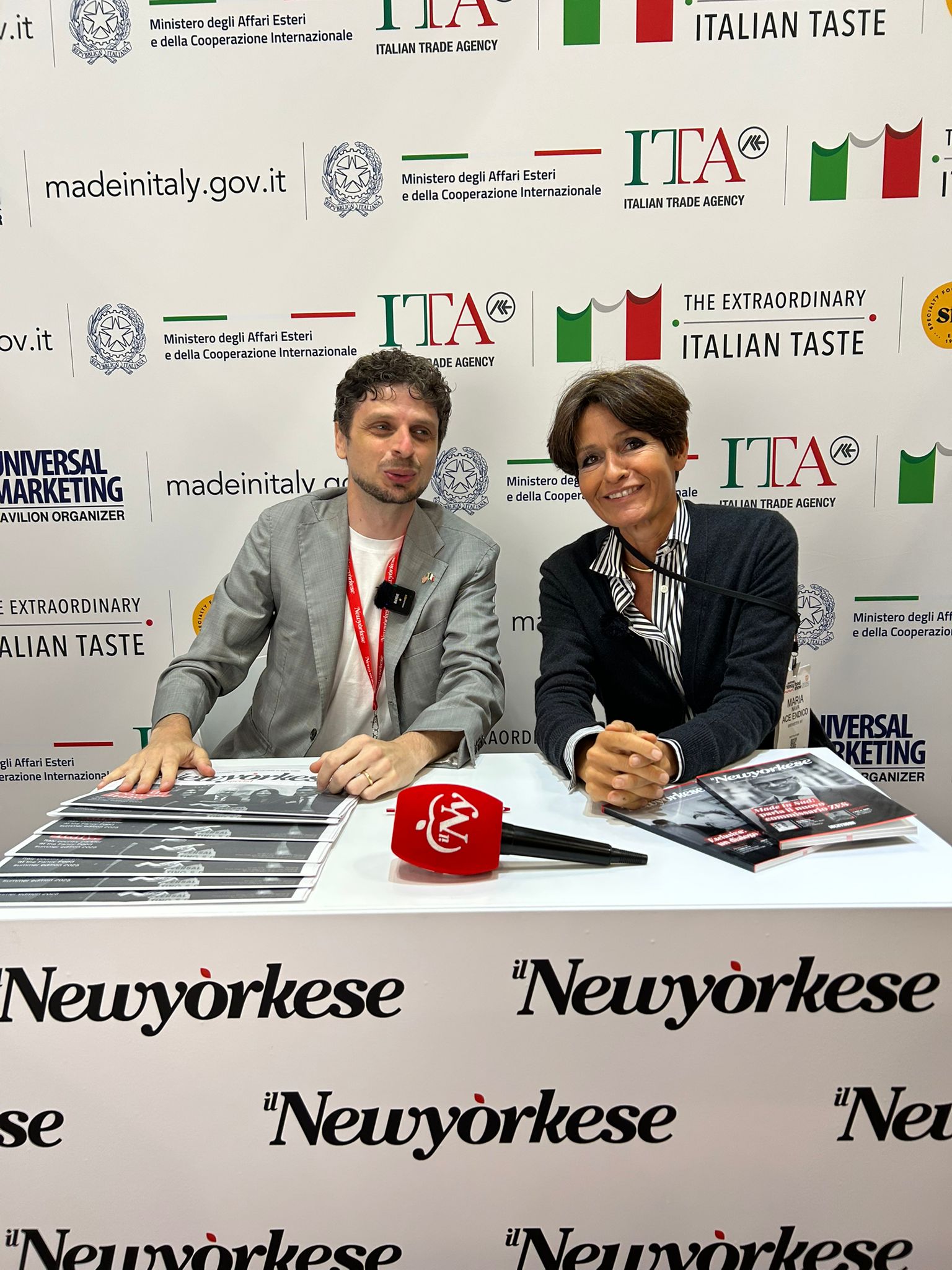Between tradition and innovation, Acquerello has revolutionized the way of thinking about and cooking rice. Maria Nava Rondolino tells the story of a product of excellence born at Colombara Estate, capable of simplifying life for restaurateurs and conquering American palates, without compromise. With a clear goal: to bring risotto into everyone’s kitchen, every day.
When did your relationship with Acquerello and the Colombara Estate begin?
Let’s say that on my part it is a love born now I think seven to eight years ago, the first time I was at Colombara Estate. I fell in love with a whole series of aspects related to Acquerello rice. The first thing is that it fully represents the tradition and uniqueness of an Italian product, in an area of rice excellence. There is a patent behind it, there is innovation, and it is a favorite of all the starred restaurants. It has packaging that makes people fall in love, distinctive, iconic. Acquerello rice is a symbol of Italianness.
Can you tell us more about this concept of Packaging?
Well, it’s amazing how a 35-year-old design today, here in New York, is still perceived as something futuristic. Several practitioners, across ages, commented, “It doesn’t look at all like packaging from thirty-five years ago.” That’s because it has been studied to the smallest detail: it is distinctive, unique, like the product it contains. Risotto is the dish that symbolizes Italy in the world, more than pasta, more than pizza. I’m sorry to say it this way, but if there are arguments about pizza and pasta (among Neapolitans, Americans, etc.), there is convergence on risotto: it represents Italy as paella represents Spain. The centrality of rice is total. In pizza, for example, how much does the base matter and how much does the filling? In risotto, on the other hand, rice is 90 percent. It has to be of the highest quality to allow for simplified and perfect preparation.
Risotto is considered a complex dish. Can watercolor simplify it?
Yes, risotto is laborious, we can say that. But ours is one of the easiest risottos to make, precisely because of the characteristics of Acquerello rice: the reintegrated bud, the tightness in cooking, the aging. We start with a Carnaroli, which is already the best variety, and age it for at least a year and a half. This process allows for incredible hold in cooking. To understand: just as fresh potatoes are not suitable for making gnocchi because they get mushy, so a fresh rice does not hold up to cooking risotto. An aged rice does. And from here come a number of advantages: you can greatly reduce the roasting (if not eliminate it), and there is also less starch dispersion at the end of cooking. So mantecatura is simplified. With Acquerello you can make a risotto that holds its own cooking, without babysitting. There is no need to add liquid little by little: it can absorb large amounts of liquid, both while cooking and afterwards. This is critical for restaurateurs, who have tight schedules, costs to optimize, customers to satisfy. But it is also important for individuals: many do not cook risotto at home because they think it is too complicated. But if they find that risotto always comes out well with this rice, it can become an everyday dish.
And in this, does Asia teach us anything?
A: In Asia, rice is daily because it is cooked in an elemental, water-based way. But Asian rice does not absorb ingredients. In Italy and Spain, on the other hand, it does, and this requires a more complex procedure. This is one of the reasons why in Asia people consume as much as 50 kg of rice a year per capita, in Italy only 6. Risotto is so complicated that we end up not cooking it. But if rice becomes easy to cook, then risotto can become an everyday dish.
What about the education of the American consumer?
A big part of our journey today is about just that: educating American palates. We are growing slowly in the United States, as has always been our philosophy, organically, without distorting ourselves. So far, however, Acquerello has come mainly to restaurants, through distributors. Convincing the private consumer takes time: we have to show them that with Acquerello, risotto can really be made at home. But the consumer is not yet our first target audience: it will become so. For now, the restaurant needs the risotto, because the customer demands it. And the restaurant needs the rice to help it with time, cost, and quality.
What are your future plans?
Reaching the end consumer, showing that risotto can be a simplified, everyday dish. Not just a restaurant dish, but a one-pot meal, like pizza or salad. Risotto is healthy: it has no gluten, and by removing the butter it also has no lactose. Just get the point across that Acquerello is a different, technically superior rice: it doesn’t stick even if you forget it on the stove five minutes longer. It holds its cooking thanks to aging, is delicately milled to preserve the grain, is precisely selected to have only perfect grains (and cook evenly). Finally, there is our unique patent: the return of the bud. The bud is like the wheat germ, it is the embryo of the ear, and it is usually lost in processing. We recover it, sift it, and reintegrate it. This gives taste, nutritional values, and makes the rice even more stable: it doesn’t stick, it’s healthier, and it tastes better.
Thank you Maria Nava.
Thank you. Long live watercolor rice!

